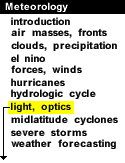
|
When the sun is high in the sky, it generally appears white because all wavelengths of visible light reach an observer's eyes with almost equal intensity. As the sun sinks toward the horizon, sunlight enters the atmosphere at a much lower angle and consequently must pass through much more atmosphere before being seen by an observer. Air molecules scatter away the shorter wavelengths of light (violet and blue) and the only light which penetrates through the atmosphere are the longer wavelengths of light (yellow, orange and red) which produce colorful sunsets. Because of the refraction of sunlight by the atmosphere itself, the sun will appear to be higher in the sky than it actually is. The combination of refraction and scattering of sunlight by atmospheric particles is responsible for producing twilight, the brightness in the sky we observe even though the sun is below the horizon.
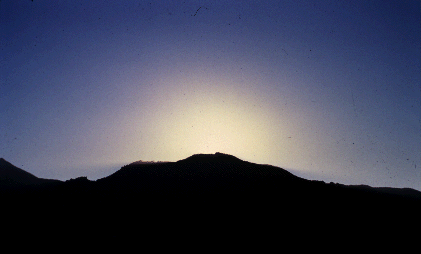
Photograph by: Holle
The size and concentration of atmospheric particles in the path of incoming sunlight determine the type of sunset observed. When sunlight encounters very few particles in the atmosphere, most wavelengths of light reach the observer's eyes with almost equal intensity. The reduced scattering produces the white or yellow sunsets commonly observed in the Rocky Mountains, where the atmosphere typically contains fewer dust and assorted particles.
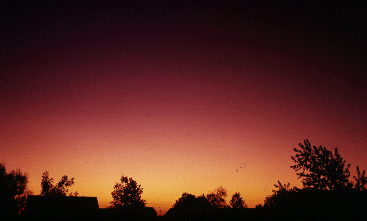
Photograph by: Holle
As incoming sunlight passes through a more dense atmosphere, shorter wavelengths of light (violet and blue) are efficiently scattered away by particles suspended in the atmosphere. This allows predominantly yellow and red wavelengths of light to reach the observer's eyes, producing a yellowish-red sunset.
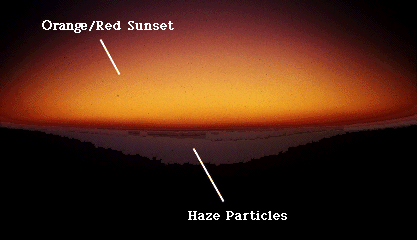
Photograph by: Young
When there is a high concentration of particles in the atmosphere that are slightly larger than air molecules (like smoke, dust, and pollutants), shorter and intermediate wavelengths of light (violet, blue and yellow) are scattered away. Therefore, only the longer wavelengths (orange and red) reach the observer's eyes, giving the sun a orange-red appearance.
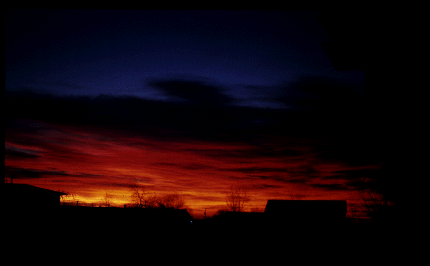
Photograph by: Holle
When incoming sunlight encounters a heavy concentration of particles in the atmosphere, the shorter wavelengths of light (violet and blue) are scattered away, resulting in a red sunset. Red sunsets are often observed from a beach because of the high concentration of salt particles suspended in the air over the oceans. These particles effectively scatter shorter wavelengths of light, producing red sunsets. Dust and ash particles injected into the atmosphere by volcanic eruptions can also cause red sunsets.

blue skies, blue haze |
|

halos |


